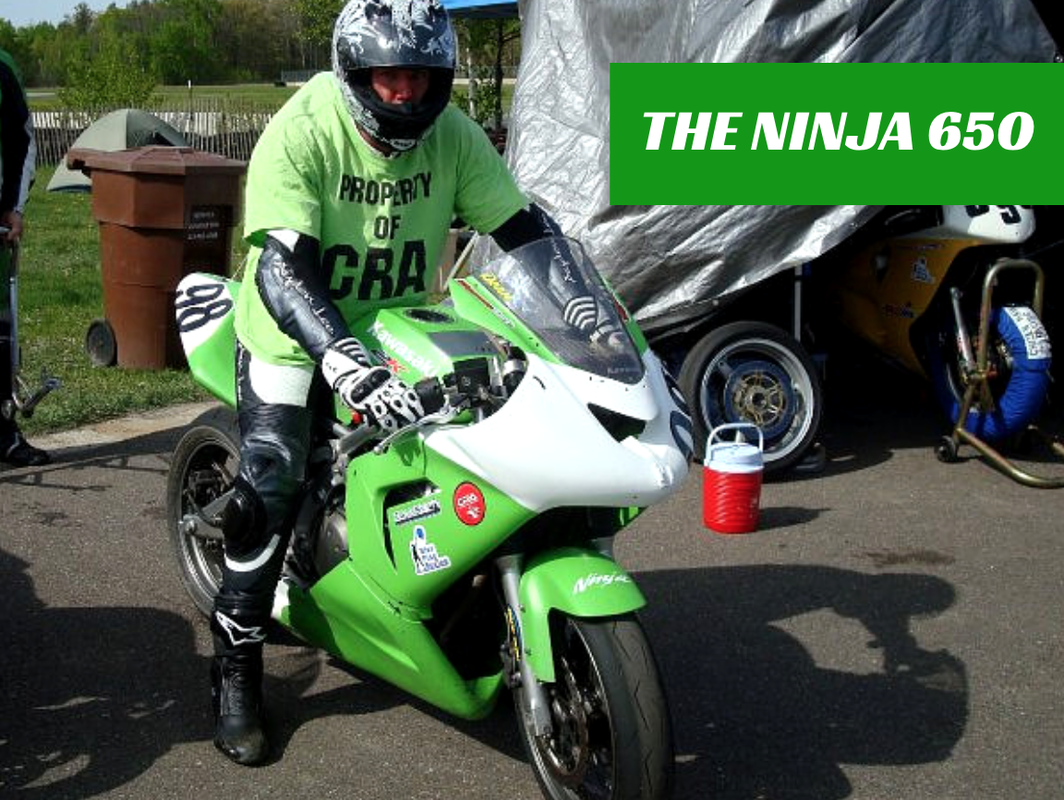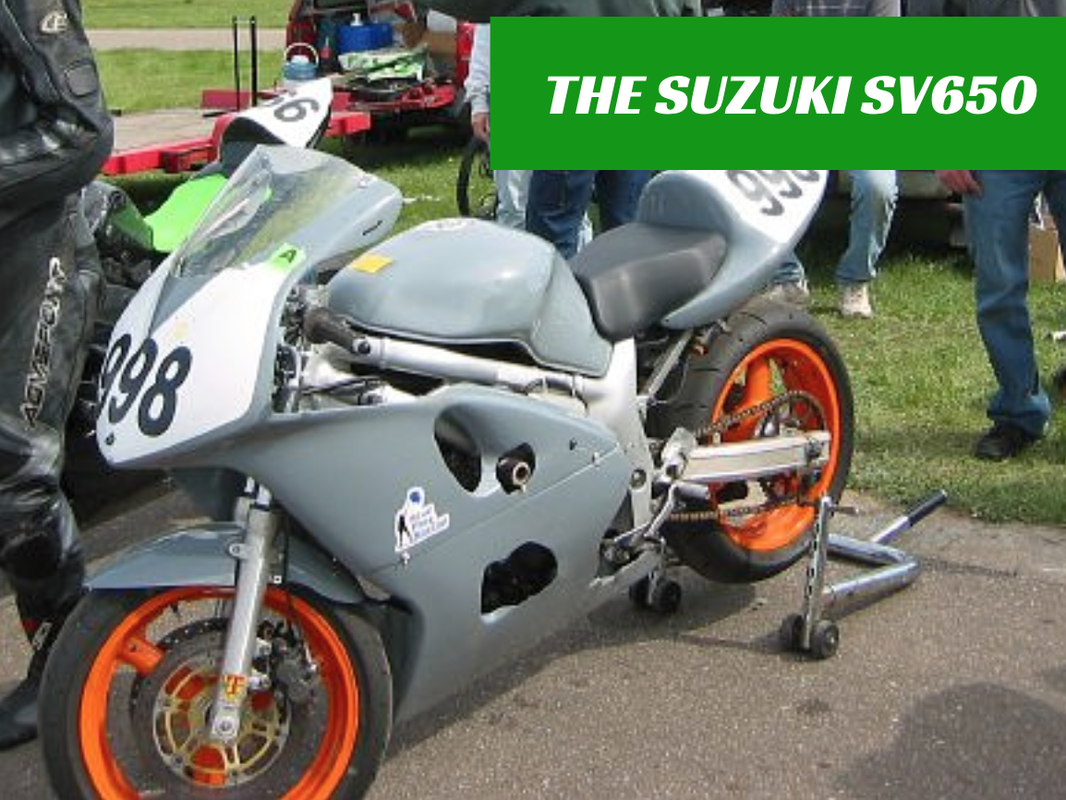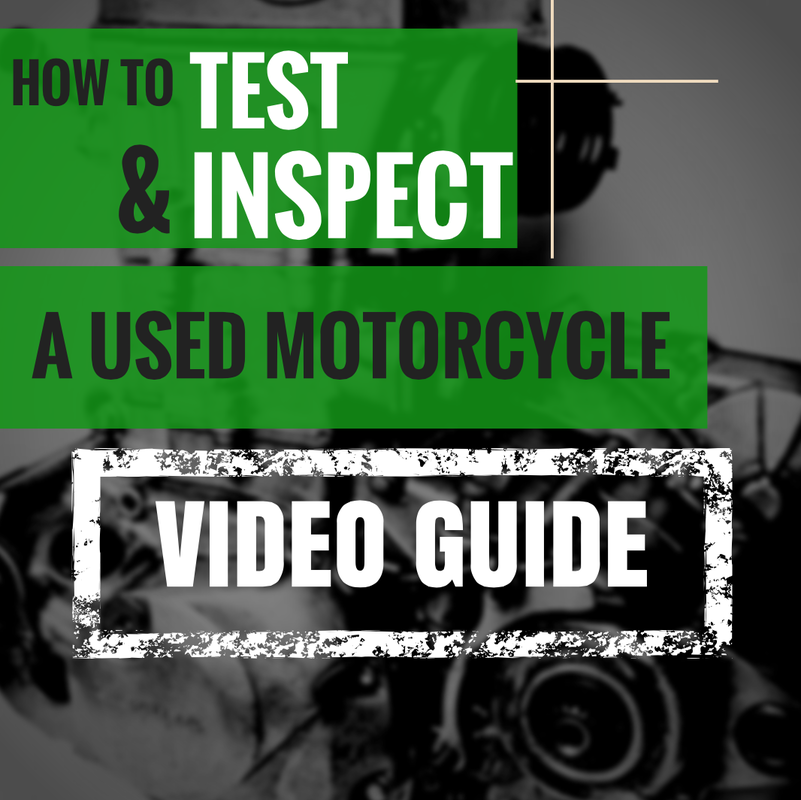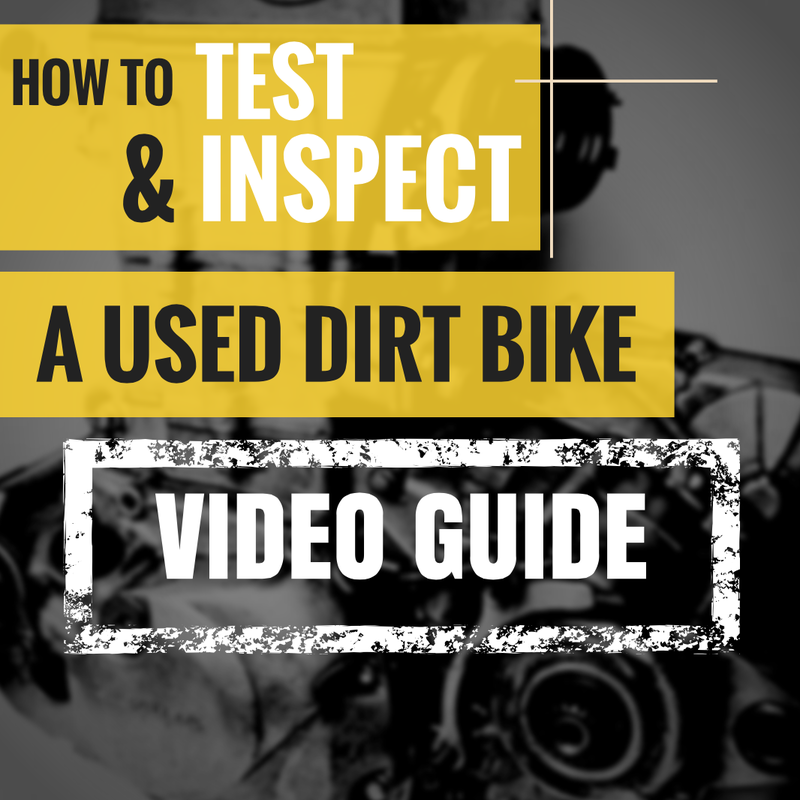What is the best first motorcycle for new riders? This question comes up a lot and the answer depends on a few things. The best first motorcycle for someone else may not be the same for you. You will need to do some research to determine what that perfect first bike for you will be. Let’s get started...
WHAT KIND OF RIDING WILL YOU BE DOING?
Will you be riding on the streets, doing track days, cruising, commuting, exploring, hauling lots of gear on long trips, going off-road, racing, or partaking in a combination of disciplines? Most bikes are tailored to perform better at some things than others so keep this in mind when searching for the perfect used bike.
HORSEPOWER VS. DISPLACEMENT
Most motorcycle models are identified by displacement and not horsepower. Depending on number of cylinders, tune of the engine, and other factors - displacement can sometimes be misleading. For example modern 600cc inline four cylinder sport bikes have upwards of 110hp however a Harley-Davidson 883 Sportster with a V-Twin pushrod engine only makes 58hp. The important thing to keep an eye on when shopping for your first motorcycle is the amount of horsepower it has. I would recommend that new riders look for bikes that have around 60 horsepower or less. 60 horsepower is enough to have a ton of fun and get you moving plenty fast. The compilation of bikes below are what I would consider suitable as beginner bikes for most riders.
BEST FIRST MOTORCYCLE RECOMMENDATIONS
SPORT: Kawasaki Ninja 250/300, Kawasaki Ninja 500, Kawasaki Ninja 650, Honda CBR250/300, Honda CBR500, Honda CBR 650F, Kawasaki Versys 650, Suzuki SFV650, Yamaha YZF-R3,
SPORT TOURING: Honda CTX700, Suzuki V-Strom 650, Kawasaki Versys 650
STANDARD: Yamaha SR400, Suzuki TU250X, Suzuki GW250F, Suzuki GW250, Suzuki SFV650, Honda CB300F, Honda CB500F, Suzuki SV650, Triumph Bonneville, Honda Nighthawk
CRUISERS: Honda CTX700, Honda Rebel, Honda Shadow, Suzuki Boulevard, Harley-Davidson 883 Sportster, Suzuki Marauder 800, Yamaha V-Star, Star 250
DUAL SPORT/ADVENTURE: Yamaha WR250, Yamaha XT-250, Yamaha TW-200, Kawasaki KXL650, Kawasaki KLX250, KTM690 Duke, Suzuki V-Strom 650, Suzuki DR650, Suzuki DR-Z400, Suzuki DR200, Suzuki DRZ450, Suzuki DRZ350, Honda XR650L, Honda CRF250L, Honda CRF230, Honda CB500X, Honda NC700X, KTM 500EXC, KTM 690 Enduro R
BIKE WEIGHT
As a new rider the weight of a motorcycle should carefully be considered as well. The heavier the motorcycle the more cumbersome it will be to maneuver at low speeds. In addition, heavy bikes are difficult to pick up should they be accidentally dropped. Ideally your first bike should be around 500lbs or less. Most sport, sport touring, standard, and dual sport meet this criteria easily, however cruisers typically tend to run on the heavier side. If you are in the market for a cruiser you may have to settle for something in the 600lb range.
DOES THE BIKE FIT?
Motorcycle fitment is crucial for having a good first bike experience. Most bikes are designed for riders that are around 5’ 8” in height. Unfortunately a lot of us are either taller or shorter than that, thus we don’t always fit the best on certain motorcycle models. Ensuring you fit well on the motorcycle is a key step to happiness. This means that your arms are in a comfortable position as you ride the bike, your legs don’t feel scrunched up, and most importantly you can at minimum use your tip-toes to stabilize the bike when stopped. I always recommend test riding a bike before buying it, which will give you a great opportunity to assess how well you fit on the bike and if you’re going to be comfortable.
If you find that the bike is fairly close to what you want, but not exactly, there a number of alterations can be made to the bike to tailor it to your needs. Aftermarket handlebars could be installed to put the bars in a better position. The seat can be altered by changing the height and shape of the seat foam to raise or lower the seat position. Aftermarket foot pegs can be used to change foot ergonomics and are available for most models. Suspension modifications can also be made to lower the height of the motorcycle, a change which can be particularly helpful for shorter riders.
HOW MUCH SHOULD I PAY?
In most cases I would recommend investing $2000 - $4000 into your first motorcycle. As I mentioned in my previous article Buying used vs. Buying new, buying a brand new bike should not be a priority. There are a plethora of good used bike options in this price range that will allow you to grow as a rider without breaking the bank.
MY FAVORITES
I personally love to recommend the Kawasaki Ninja 650 and Suzuki SV650. Both have very nice power curves, a lot of torque, and are pretty forgiving. Both bikes can be a hoot to ride on the twisties and are more than capable on the street. I’ve personally raced the Kawasaki Ninja 650 and have found it to be a formidable weapon in the lightweight class, forgiving, and extremely enjoyable. In addition, Kawasaki and Suzuki have offered their respective models for almost a decade so used bike prices are cheap and parts are plentiful should any accidents happen. If you’re in the market for a sport bike, standard bike, or even a sport touring bike you may find that one of these two bikes will be your “best first motorcycle”.
Will you be riding on the streets, doing track days, cruising, commuting, exploring, hauling lots of gear on long trips, going off-road, racing, or partaking in a combination of disciplines? Most bikes are tailored to perform better at some things than others so keep this in mind when searching for the perfect used bike.
HORSEPOWER VS. DISPLACEMENT
Most motorcycle models are identified by displacement and not horsepower. Depending on number of cylinders, tune of the engine, and other factors - displacement can sometimes be misleading. For example modern 600cc inline four cylinder sport bikes have upwards of 110hp however a Harley-Davidson 883 Sportster with a V-Twin pushrod engine only makes 58hp. The important thing to keep an eye on when shopping for your first motorcycle is the amount of horsepower it has. I would recommend that new riders look for bikes that have around 60 horsepower or less. 60 horsepower is enough to have a ton of fun and get you moving plenty fast. The compilation of bikes below are what I would consider suitable as beginner bikes for most riders.
BEST FIRST MOTORCYCLE RECOMMENDATIONS
SPORT: Kawasaki Ninja 250/300, Kawasaki Ninja 500, Kawasaki Ninja 650, Honda CBR250/300, Honda CBR500, Honda CBR 650F, Kawasaki Versys 650, Suzuki SFV650, Yamaha YZF-R3,
SPORT TOURING: Honda CTX700, Suzuki V-Strom 650, Kawasaki Versys 650
STANDARD: Yamaha SR400, Suzuki TU250X, Suzuki GW250F, Suzuki GW250, Suzuki SFV650, Honda CB300F, Honda CB500F, Suzuki SV650, Triumph Bonneville, Honda Nighthawk
CRUISERS: Honda CTX700, Honda Rebel, Honda Shadow, Suzuki Boulevard, Harley-Davidson 883 Sportster, Suzuki Marauder 800, Yamaha V-Star, Star 250
DUAL SPORT/ADVENTURE: Yamaha WR250, Yamaha XT-250, Yamaha TW-200, Kawasaki KXL650, Kawasaki KLX250, KTM690 Duke, Suzuki V-Strom 650, Suzuki DR650, Suzuki DR-Z400, Suzuki DR200, Suzuki DRZ450, Suzuki DRZ350, Honda XR650L, Honda CRF250L, Honda CRF230, Honda CB500X, Honda NC700X, KTM 500EXC, KTM 690 Enduro R
BIKE WEIGHT
As a new rider the weight of a motorcycle should carefully be considered as well. The heavier the motorcycle the more cumbersome it will be to maneuver at low speeds. In addition, heavy bikes are difficult to pick up should they be accidentally dropped. Ideally your first bike should be around 500lbs or less. Most sport, sport touring, standard, and dual sport meet this criteria easily, however cruisers typically tend to run on the heavier side. If you are in the market for a cruiser you may have to settle for something in the 600lb range.
DOES THE BIKE FIT?
Motorcycle fitment is crucial for having a good first bike experience. Most bikes are designed for riders that are around 5’ 8” in height. Unfortunately a lot of us are either taller or shorter than that, thus we don’t always fit the best on certain motorcycle models. Ensuring you fit well on the motorcycle is a key step to happiness. This means that your arms are in a comfortable position as you ride the bike, your legs don’t feel scrunched up, and most importantly you can at minimum use your tip-toes to stabilize the bike when stopped. I always recommend test riding a bike before buying it, which will give you a great opportunity to assess how well you fit on the bike and if you’re going to be comfortable.
If you find that the bike is fairly close to what you want, but not exactly, there a number of alterations can be made to the bike to tailor it to your needs. Aftermarket handlebars could be installed to put the bars in a better position. The seat can be altered by changing the height and shape of the seat foam to raise or lower the seat position. Aftermarket foot pegs can be used to change foot ergonomics and are available for most models. Suspension modifications can also be made to lower the height of the motorcycle, a change which can be particularly helpful for shorter riders.
HOW MUCH SHOULD I PAY?
In most cases I would recommend investing $2000 - $4000 into your first motorcycle. As I mentioned in my previous article Buying used vs. Buying new, buying a brand new bike should not be a priority. There are a plethora of good used bike options in this price range that will allow you to grow as a rider without breaking the bank.
MY FAVORITES
I personally love to recommend the Kawasaki Ninja 650 and Suzuki SV650. Both have very nice power curves, a lot of torque, and are pretty forgiving. Both bikes can be a hoot to ride on the twisties and are more than capable on the street. I’ve personally raced the Kawasaki Ninja 650 and have found it to be a formidable weapon in the lightweight class, forgiving, and extremely enjoyable. In addition, Kawasaki and Suzuki have offered their respective models for almost a decade so used bike prices are cheap and parts are plentiful should any accidents happen. If you’re in the market for a sport bike, standard bike, or even a sport touring bike you may find that one of these two bikes will be your “best first motorcycle”.
Have a first bike recommendation? Leave a comment below and fill everyone in on what you think is a good first motorcycle.






 RSS Feed
RSS Feed